Ipil Tree
- November 5, 2024
- 0 comment
The Ipil tree, scientifically known as Leucaena leucocephala, is a fast-growing leguminous tree native to Central America but now found throughout tropical and subtropical regions worldwide. It plays an essential role in various ecosystems by improving soil fertility, providing food for animals, and stabilizing land.

Due to its rapid growth and nitrogen-fixing properties, the Ipil tree supports biodiversity, particularly in degraded landscapes where it helps restore soil health and support native flora and fauna.
What Is a Philippine Ipil Tree?
The Philippine Ipil tree (Leucaena leucocephala) is a member of the Fabaceae family, commonly known as the pea or legume family. This tree is easily recognized by its fern-like, feathery leaves, which are green and finely divided. It produces small, round, white or cream-colored flowers that grow in clusters and eventually form long, flat seed pods. The bark of the Ipil tree is brown, with a smooth texture when young, becoming rough and cracked as the tree matures.
| Characteristics | Description |
|---|---|
| Species | Philippine Ipil Tree (Leucaena leucocephala) |
| Common Names | Ipil-Ipil, White Leadtree, River Tamarind |
| Lifespan | Up to 30 years |
| Location | Widely found across the Philippines and tropical regions |
| Height | Typically grows up to 10-20 meters |
| Leaves | Fern-like, green, and finely divided |
| Flowers | Small, white or cream-colored clusters |
| Ecological Role | Fixes nitrogen in soil, supports soil health, prevents erosion |
| Cultural Importance | Used in agroforestry, animal fodder, and as a source of shade |
| Adaptability | Thrives in various soil types and tolerates drought once established |
| Wildlife Support | Provides food and shelter for birds, insects, and other wildlife |
| Economic Use | Used for wood, fodder, and as green manure in farming |
| Pollination | Attracts bees and butterflies, aiding in local biodiversity |
| Symbolic Meaning | Represents resilience and ecological sustainability in Filipino culture |
One of the most interesting characteristics of the Ipil tree is its ability to fix nitrogen in the soil, thanks to a symbiotic relationship with root bacteria called Rhizobium. This makes it beneficial for improving soil health and helping nearby plants grow. Additionally, the tree can live up to 30 years, which gives it a long-lasting presence in the environments it inhabits.
Different Types of Philippine Ipil Tree Species
Several species and varieties of the Ipil tree are used in various regions, each with its unique adaptations and ecological importance. Notable varieties include:
Leucaena Leucocephala Subsp. Glabrata
Known for its broad leaves and use in agroforestry.


Leucaena Diversifolia
Grows in cooler highland climates and has higher tolerance to temperature variations.
Leucaena Esculenta
Primarily found in Mexico, this species has larger seeds and is sometimes cultivated as a food crop.

Each variety of the Ipil tree provides distinct ecological advantages, such as soil stabilization and food sources for livestock. In native regions, different species have adapted to their local conditions, enhancing biodiversity and supporting native wildlife.
Where Do Ipil Trees Grow?
The Ipil tree thrives in warm, tropical and subtropical climates and has spread across regions including Asia, the Pacific Islands, and parts of Africa. It prefers sunny locations and well-drained soils but is adaptable enough to grow in a variety of soil types, including poor, sandy, or degraded soils.
Adaptable to both arid and humid environments, the Ipil tree plays an ecological role in areas where soil needs enrichment or erosion control. In countries where it has naturalized, such as the Philippines, it grows abundantly along roadsides, open fields, and disturbed lands, where it stabilizes soil and prevents erosion, especially on slopes and riverbanks.
How to Grow and Care for Ipil Tree
Growing an Ipil tree at home is relatively straightforward. Here are a few tips:

- Soil: Ipil trees thrive in sandy or loamy soil types, but they are adaptable and can tolerate poor soil due to their nitrogen-fixing ability.
- Watering: Although drought-tolerant once established, young trees require regular watering, especially in dry periods.
- Sunlight: Full sunlight is ideal for the growth of the Ipil tree, as it encourages healthy leaves and flower development.
- Propagation: The tree can be grown from seeds, which are readily available from mature seed pods. Seeds should be soaked in water before planting to encourage germination.
For maintenance, occasional pruning is recommended to promote a healthy structure and remove any damaged branches. The tree is generally pest-resistant, although aphids or fungal diseases may occasionally affect it.
Ecological Benefits of Ipil Tree
The Ipil tree offers several ecological benefits, including:

- Soil Improvement: Its nitrogen-fixing ability enriches the soil, benefiting surrounding plants and crops.
- Erosion Control: Its extensive root system stabilizes soil, making it suitable for reforestation in erosion-prone areas.
- Carbon Sequestration: Fast-growing trees like the Ipil are valuable for capturing carbon dioxide, contributing to climate change mitigation.
By enriching soil and supporting soil organisms, the Ipil tree creates a habitat conducive to diverse plant and animal life.
Ipil Tree Flowering and Pollination
The Ipil tree produces small, spherical flower clusters in shades of white or cream, typically blooming in the spring and summer. These flowers emit a mild fragrance and attract pollinators like bees and butterflies, which are essential for the tree’s reproductive cycle. The pollinated flowers develop into long seed pods, each containing numerous seeds that can spread to new areas and establish new trees.
Is Ipil Tree Drought-Tolerant?
One of the remarkable features of the Ipil tree is its drought tolerance, which makes it suitable for arid and semi-arid regions. Once established, the tree can withstand periods of low rainfall, thanks to its deep roots that access groundwater. This drought resistance makes it an excellent choice for reforestation in water-scarce environments.
Ipil Tree and Wildlife Interactions
The Ipil tree is an important resource for wildlife, providing food and shelter for a variety of animals and insects. Birds, small mammals, and insects feed on its leaves, flowers, and seeds. Its dense foliage creates habitats for nesting birds and shade for smaller plants, enhancing biodiversity in its environment.
In agricultural settings, it is sometimes used as a “fodder tree,” as its leaves are rich in protein and can be a supplementary feed for livestock like cattle and goats.
Conclusion
The Ipil tree, Leucaena leucocephala, plays a multifaceted role in supporting both human and ecological systems. Its nitrogen-fixing ability, drought tolerance, and soil-stabilizing qualities make it a valuable asset in conservation and reforestation projects. By enhancing soil fertility, offering food and shelter to wildlife, and contributing to biodiversity, the Ipil tree is an essential player in maintaining healthy ecosystems. In efforts to combat soil erosion, improve agricultural productivity, and support wildlife, the Ipil tree proves to be a resilient and valuable tree species that supports both people and the planet.
Frequently Asked Questions (FAQs)
- What is the Ipil Tree?
The Ipil tree is a fast-growing, nitrogen-fixing tree from the legume family (Fabaceae). It’s valued for soil improvement, erosion control, and as a source of animal fodder. - Where does the Ipil Tree naturally grow?
Native to Central America, it now grows in tropical and subtropical regions worldwide, including Asia, Africa, and the Pacific, where it thrives in sunny, well-drained soils. - What are the main characteristics of the Ipil Tree?
The tree has fern-like leaves, small white flowers, and produces long seed pods. It can live up to 30 years and contributes to soil health through nitrogen fixation. - How does the Ipil Tree benefit the environment?
It enriches soil by fixing nitrogen, prevents soil erosion, supports biodiversity by providing food and shelter to wildlife, and helps in carbon sequestration. - Can the Ipil Tree withstand drought?
Yes, the Ipil tree is drought-tolerant once established, making it suitable for dry regions where water is limited. - How can I grow an Ipil Tree at home?
Plant in sunny areas with well-drained soil. Soak seeds before planting for better germination. Water young plants regularly until they’re established. - Does the Ipil Tree attract pollinators?
Yes, its white flowers attract bees and butterflies, which aid in pollination and contribute to local biodiversity. - What is the Ipil Tree’s role with wildlife?
The Ipil tree provides food, nesting sites, and shade for a variety of animals, making it an important part of many ecosystems.




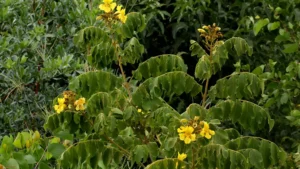

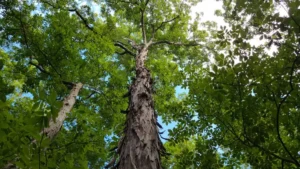
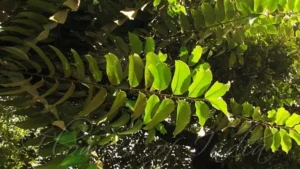

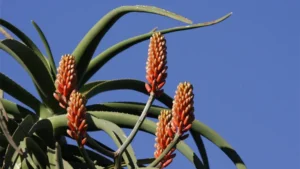


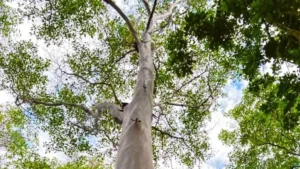
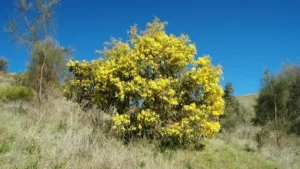
Leave your comment